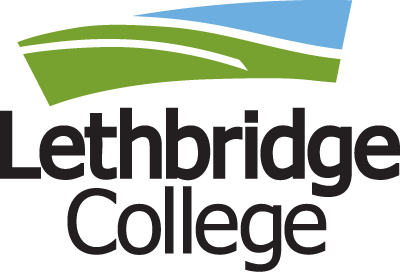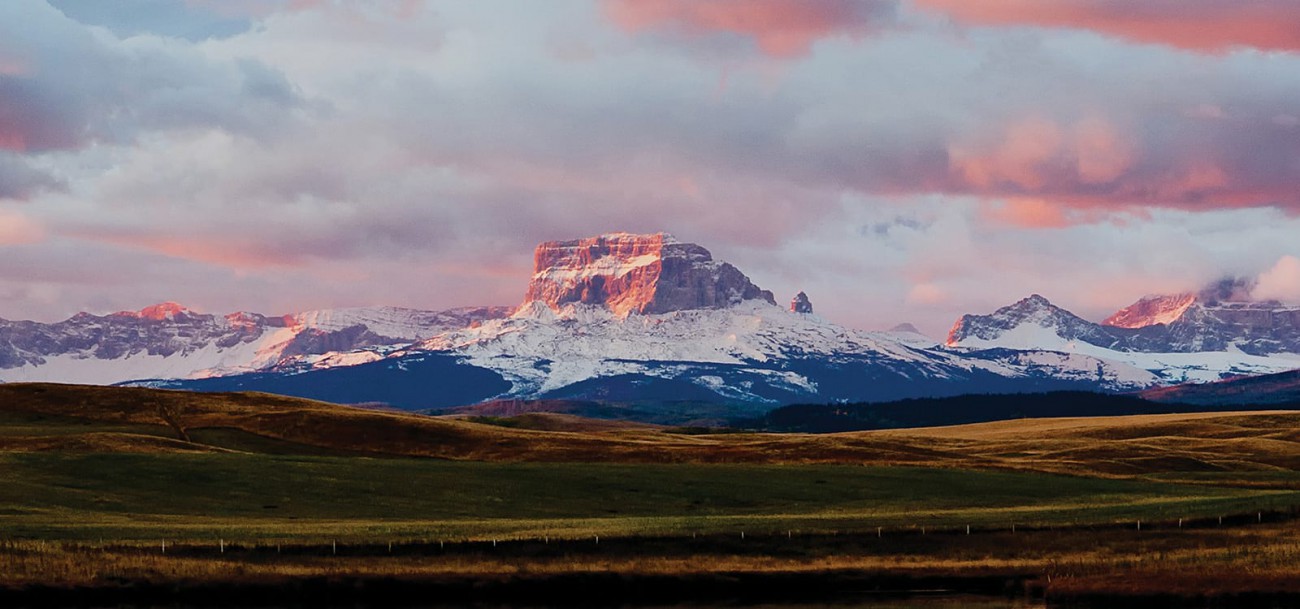Chief Mountain | Castle Wilderness Area | Writing-on-Stone | Waterton | Crowsnest Mountain | Lethbridge's Coulees
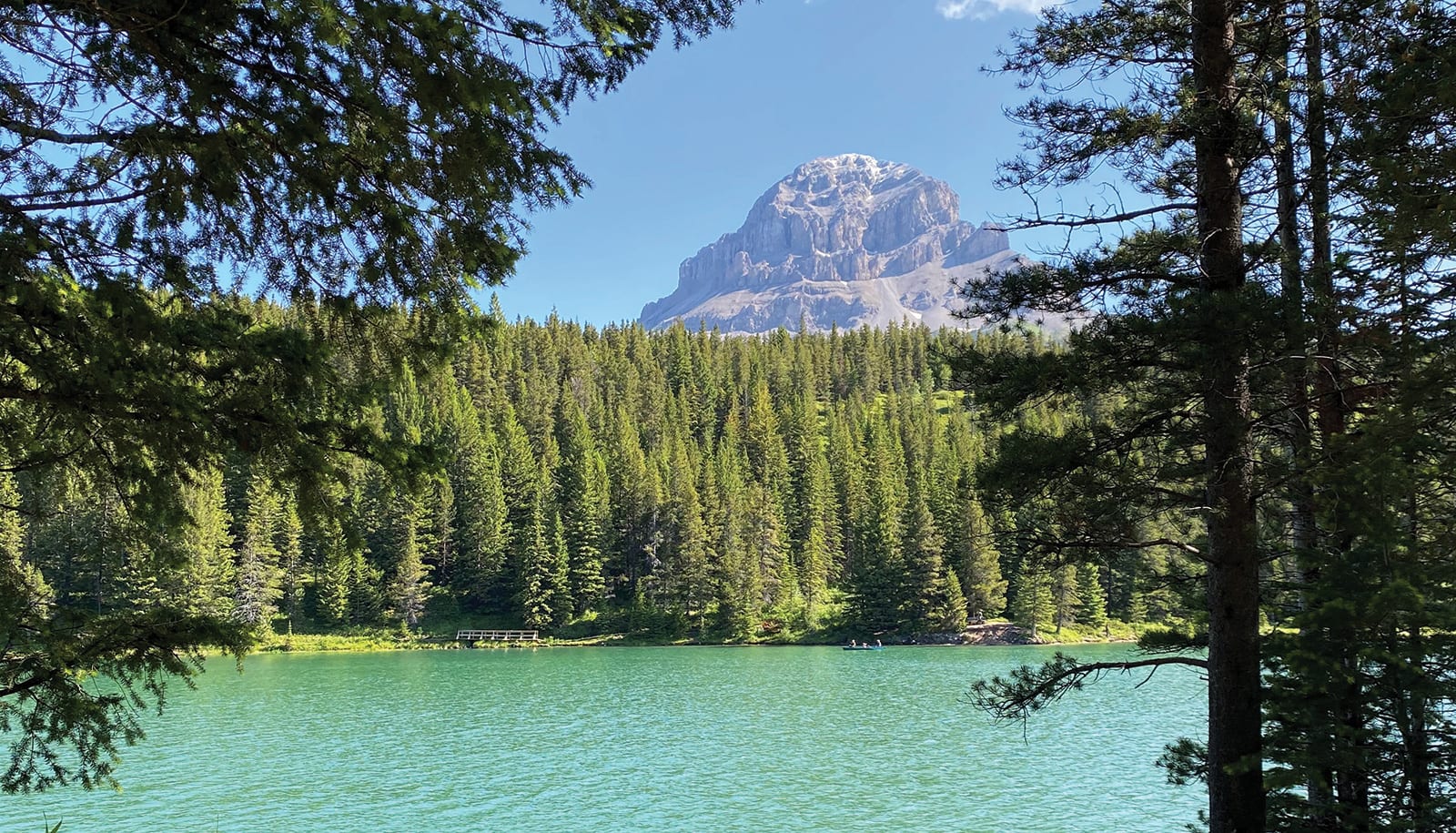
ABOUT OMAHKAI’STOO (CROWSNEST MOUNTAIN)
Elevation: 2,785 m The Crowsnest Pass is the richest archaeological zone in the Canadian Rockies. The oldest relics are stone tools found on a rock ridge outside Frank, Alta., from more than 10,000 years ago, at the end of the last glacial period.
 A STORY OF OMAHKAI’STOO
A STORY OF OMAHKAI’STOO
CROWSNEST MOUNTAIN
By Ninna Piiksii (Mike Bruised Head/Chief Bird) | photos by Shanda Webber and Andrew Nugara
This is a story of Omahkai’stoo (Crowsnest Mountain/Big Raven Mountain). You have already heard about how Raven’s home place was originally Ninaiistáko (Chief Mountain), and how when Raven and Thunder got all of that settled, they agreed that Thunder would now occupy Ninaiistáko, and Raven would go to live at Omahkai’stoo. (See story on p. 15).
As the old people say, Omahkai’stoo continually reminds Thunder to treat people well. And Omahkai’stoo looks out for the people in what we now call the Crowsnest Pass, as that pass has always been used by the Siksikaitsitapi (Blackfoot people) to reach the interior of British Columbia and even the coast. Omahkai’stoo is a marker, a guide, and that’s why it stands alone. That way, Raven can see far and wide. And Raven protects and guides the people through their journey through the mountains.
Omahkai’stoo wasn’t only used by the Blackfoot people. It is also used by the animals, and it was a guide for the larger four-legged beings and all the other smaller, four-legged animals too. They, also, use Omahkai’stoo as a marker to know which direction they should go. And the birds that migrate use it, as a guide to know where to go when they move on. And those birds that stay year-round, they look at the Raven – now we call it the crow – they look at that as their home. The crow never leaves. There are a lot of crows all over. They don’t migrate. They feel safe in that area, and through all the mountains where they live.
Many Siksikaitsitapi would go to this area to fast, just as much as they do at Ninaiistáko. They have fasted there from time immemorial. The Siksikaitsitapi also used to camp a lot around Omahkai’stoo, back in what they would call the dog days. There are still a lot of tipi rings and sacred rock mounds there. The buffalo went way up there as there was a lot of good water, and you can still find today buffalo skulls and bones. But the people have been pushed back. The land now is not part of our Blackfoot and Piikani reserves, and we’ve lost that history of it. We’ve been pushed away.
The colonial impact has taken this knowledge of the mountains away, and some of the mountain culture and mountain language – the names of all the beings and animals and plants and trees. Now we live in the prairie. We don’t know the names of all of those trees. The same is true of a lot of ceremonies from way back in the day. There is so much history that we’ve been disconnected from.
But I think we can reconnect. It all comes back to the spiritual aspect of reconnecting with land. Omahkai’stoo is a guiding protective mountain. That’s why it stands all by itself. It almost stands away from the mountain range. I’ve heard our elders call it All Alone Mountain, and it has the respect of the human, spiritual and animal world.
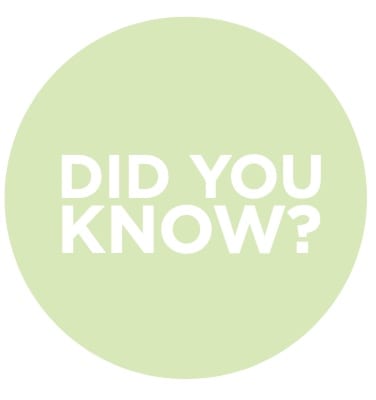
Andy Good Peak is named for one of the area’s more colourful settlers. A former Montreal detective, Andy married his American sweetheart, Kate, and the two set off on their honeymoon to find gold in the Klondike. They ended up in the Pass where they opened the Summit, a hotel that straddled the B.C.-Alberta border. Depending on which provincial liquor laws were the most liberal at any given time, they would move the bar from one end of the building to the other. A unique attraction at the hotel was a zoo that featured a tamed bear named Jim, a cougar named Leo, a monkey and an alligator. The Summit was renowned across North America for its fine food and dining. Unfortunately, despite her entrepreneurial skill in building the Summit, Kate was omitted from the mountain’s name.
Sources: “The Top ‘O’ The World” Lethbridge Herald, April 14, 1923; John Kinnear, “Tracing the Flow of the Crow”; Canadian Mountain Place Names: The Rockies and Columbia Mountains by Glen W. Boles, Roger W. Laurilla, and William Lowell Putnam; 50 Roadside Panoramas in the Canadian Rockies by Dave Birrell.

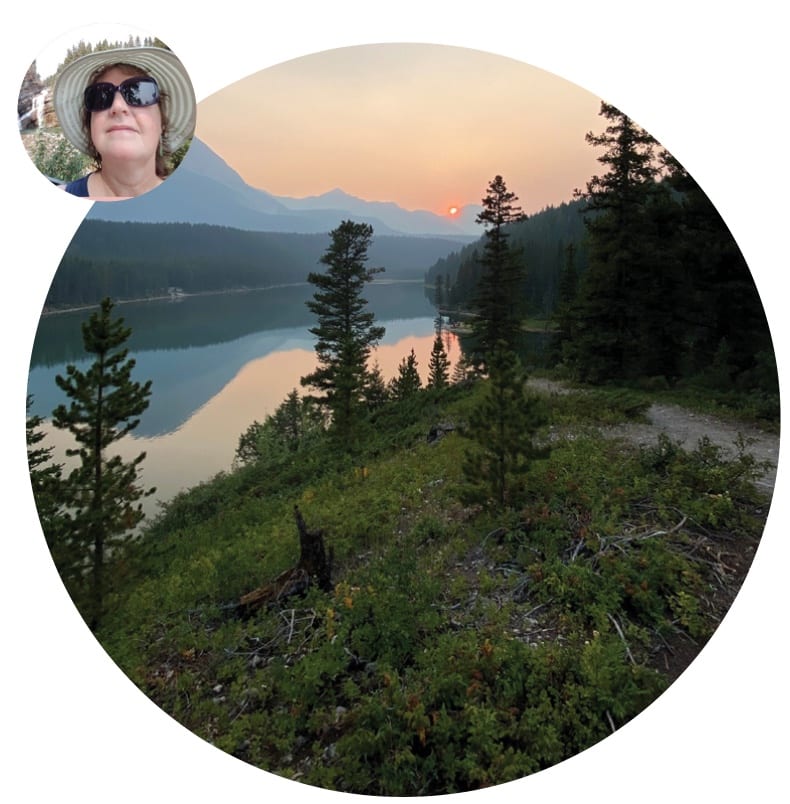
AMBER BAGU SHARES:
WHAT THE MOUNTAINS MEAN TO ME
Story by Amber Bagu | photo by Shanda Webber
To me, the mountains mean heritage, home, comfort, beauty, peace and adventure. I grew up on an acreage west of Coleman (Willow Drive), with the river literally in my backyard and the mountains at the front. My grandparents moved to Willow Drive in the 1930s and had nine children. Three of those children then spread out to other acreages in Willow Drive, including my mother.
My childhood memories include walking to my grandparents’ house and seeing wildlife along the way (funniest was the badger I thought was my grandmother’s dog and was trying to chase into the yard; he didn’t like that!); swimming in the river with the family in the summer and Dad coming straight from work to join us; walking in the mountains with my brother and the dogs; rescuing said brother when he got his 4x4 stuck somewhere in the back of beyond; and harvesting the produce of the mountains—fish, raspberries, strawberries, elderberries (for wine, of course), huckleberries, saskatoons, black currants, mushrooms, plants for herbal remedies, and the list goes on.
Of course, I cannot forget the beautiful sunrises and sunsets I saw almost daily. I slept with my window open almost all the time and would awaken with the birds. I really miss hearing the ravens gurgling in the morning. I do not miss, though, the deer flies in the summer and the icy roads in the winter. I still enjoy the mountains on day trips in the summer. Lovely mountains.
TOP 4
CROWSNEST PASS
Great place to eat: You can’t go wrong with a cinnamon bun from the Cinnamon Bear Café in Coleman (8342 20th Avenue).
Hike with a breathtaking view: Take a trip to the wreckage of a 1946 RCAF airplane crash that sits below Mt. Coulthard and Mt. Parrish. Located about 7.5 km from the North Lost Creek trailhead, the site also serves as a quick stopover before a scramble to the summit of Mt. Coulthard.
Got kids? Take an hour or two to explore the stories and sights at the Frank Slide Interpretive Centre (and make sure you don’t miss the easy 1.5 km hike on the interpretive trail).
Want to go back in time? Visit the old Lille Townsite to check out coke ovens, fire hydrants, and building foundations that date to the turn of the 20th century – and get a better understanding of the coal mining history of the Crowsnest Pass.

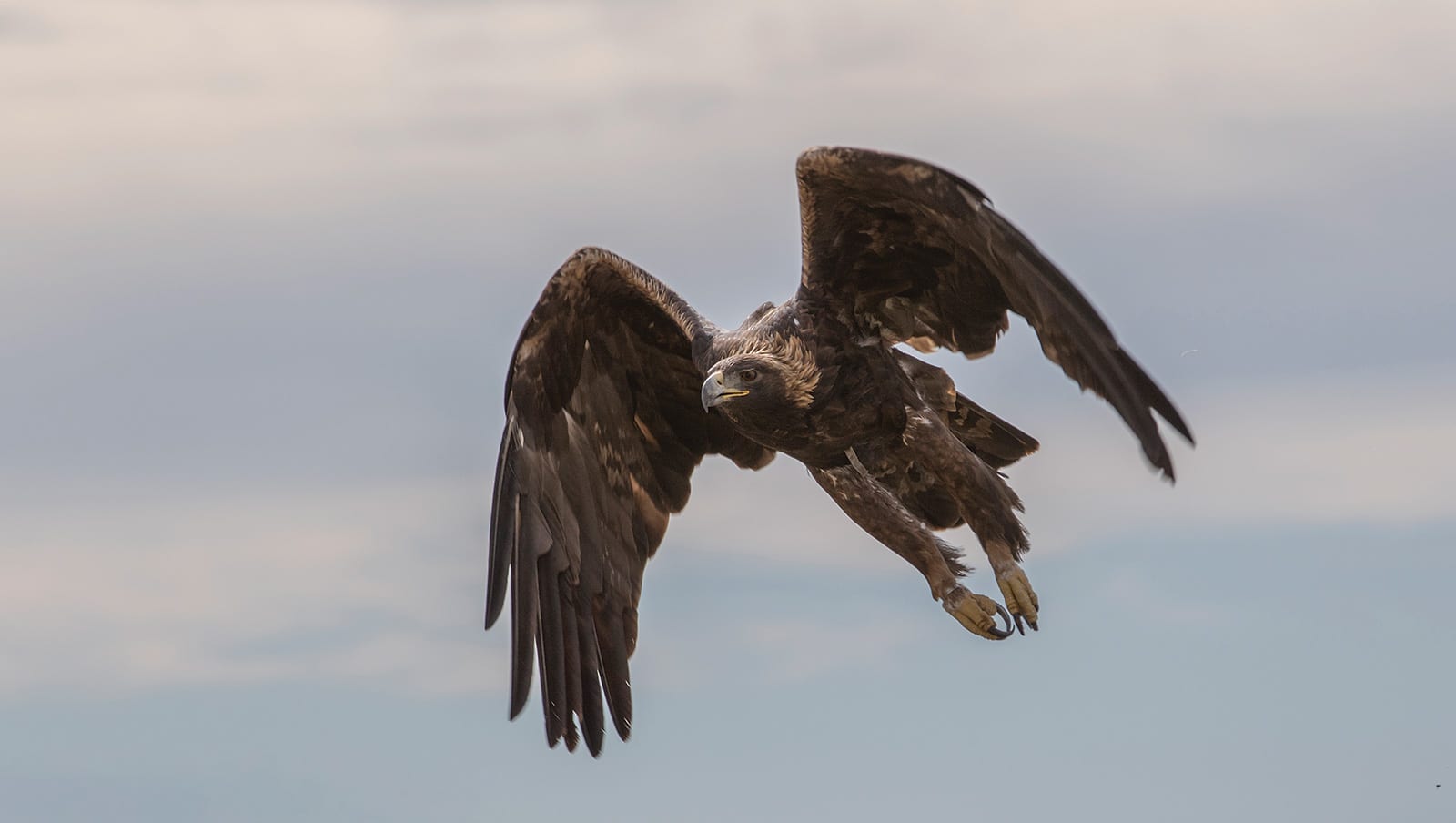
WHERE EAGLES DARE
There are two eagle species in Alberta, the bald and the golden. People can occasionally see bald eagles in the Lethbridge area, but did you know that the Crowsnest Pass area is one of the best areas to observe a biannual golden eagle migration? In the spring, large numbers of golden eagles can be seen flying through the area in narrow streams in the sky. They fly north to Alaska and Yukon from as far south as northern Mexico. The migration begins in late February, and the peak period lasts until the end of April. In fall, the route reverses, and the eagles can be seen from mid-September to November. Ridgetops become nightly roosts until the first light of dawn, and the eagles’ daily movement in the sky ends as soon as it becomes dark.
A good bird spotter can sometimes find the eagles resting on the peaks for the evening. For those who enjoy birding or bird photography, the journey to a small handful of designated observation sites in the area would make for an amazing outing, even for novices. Although the weather may not always cooperate and the skies may be clouded over, there is always a chance that your trip will be worthwhile.
Story by Aaron Keeling | photo by Kerri Martin


